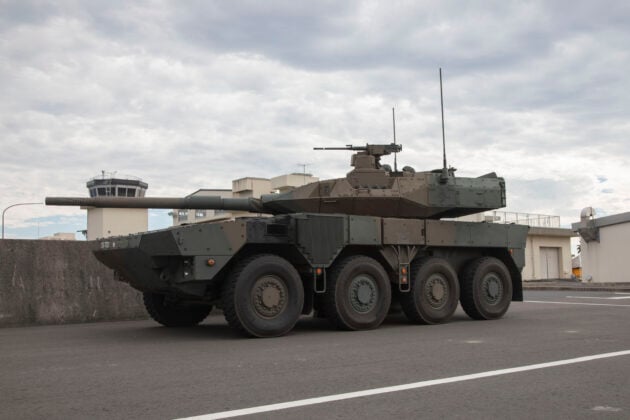
Japan’s 2025 defense expenditures have reached their highest level in postwar history as Tokyo continues to expand its military capabilities in response to what officials describe as an increasingly severe security environment in East Asia.
The Ministry of Defense reports that the country’s base defense budget for the 2025 fiscal year totaled ¥8.7 trillion (around $57 billion), up roughly 60 percent compared to five years earlier. When including Coast Guard funding and U.S. force realignment expenses, the broader defense-related outlay stood at ¥9.9 trillion, or 1.8 percent of Japan’s GDP.
The increase reflects Japan’s continued move toward meeting its revised security objective of allocating 2 percent of GDP to defense spending — a target originally set for 2027 but now expected to be achieved earlier under Prime Minister Sanae Takaichi’s administration. Speaking earlier this year, Takaichi described the acceleration as essential to ensuring “Japan’s readiness in an era of growing regional uncertainty.”
The sharp rise comes amid China’s ongoing military expansion, North Korea’s continued missile testing, and deepening U.S.–China strategic rivalry across the Indo-Pacific. Japanese defense officials have repeatedly cited these developments as justification for a stronger and more self-reliant national defense posture.
The 2025 allocation funds personnel costs, base and facility upgrades, and procurement of advanced weapons platforms, including next-generation fighter jets and new classes of surface combatants. It also supports the ongoing development of long-range strike systems, command-and-control modernization, and cyber and space defense capabilities — all part of Japan’s “Defense Buildup Program” launched in 2022.
The shift represents a major break from the postwar convention that capped defense spending at roughly one percent of national output. That limit was introduced in 1976 under Prime Minister Takeo Miki and symbolized Japan’s pacifist orientation for decades. Although the ceiling was formally lifted in the 1980s under Yasuhiro Nakasone, successive governments largely observed it in practice until the late 2010s, when pressure to expand defense capacity began to mount.
By 2025, Japan’s defense expenditures placed it among the world’s top military spenders. The Defense Ministry said the expanded budget is necessary to maintain deterrence and respond to “new forms of warfare,” including electronic, unmanned, and hypersonic threats. The Air, Maritime, and Ground Self-Defense Forces have each introduced modernization programs focusing on joint operations, rapid mobility, and interoperability with U.S. and allied forces.
The shift strengthens the Pacific alliance network, providing greater capability integration with U.S. forces operating in the region. It also creates new openings for industrial cooperation in areas such as autonomous systems, missile defense, and secure communications.
At the same time, Japan’s rapid rearmament signals a broader geopolitical shift — one where Tokyo’s long-held policy of restraint is giving way to a defense strategy built on deterrence, technological sophistication, and readiness for high-intensity conflict.
As Japan edges closer to the 2 percent threshold, its choices in the next fiscal cycle will define how far the country is prepared to go in reshaping its role as a front-line security actor in the Indo-Pacific.